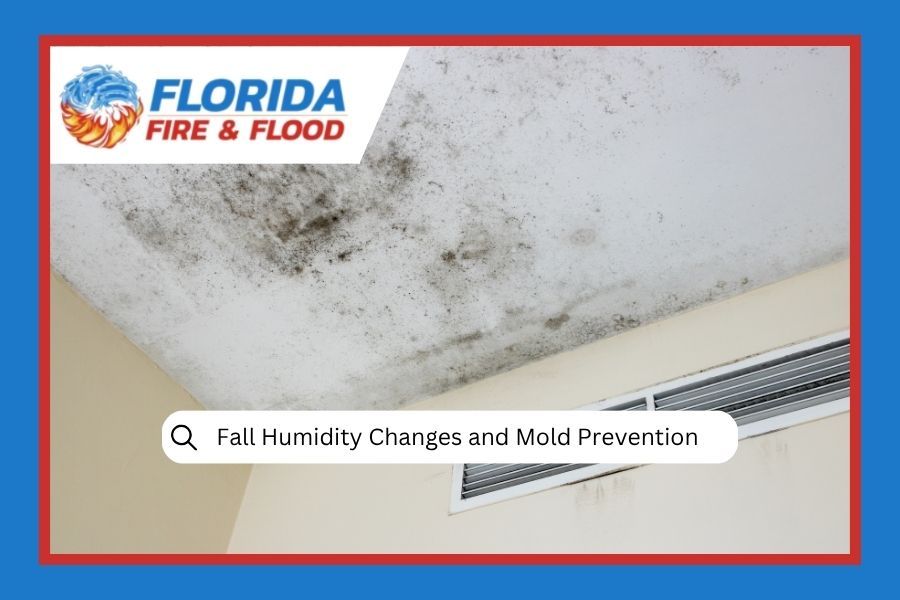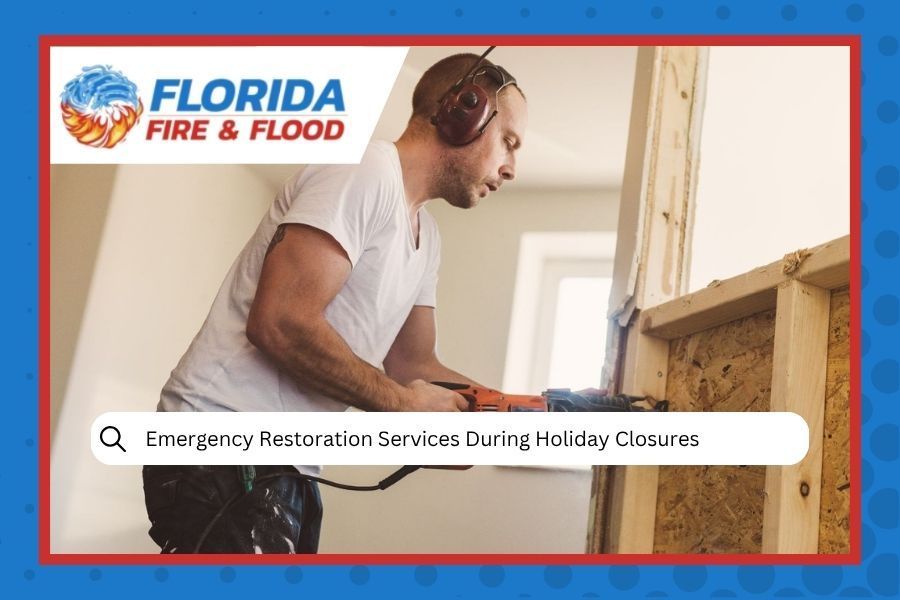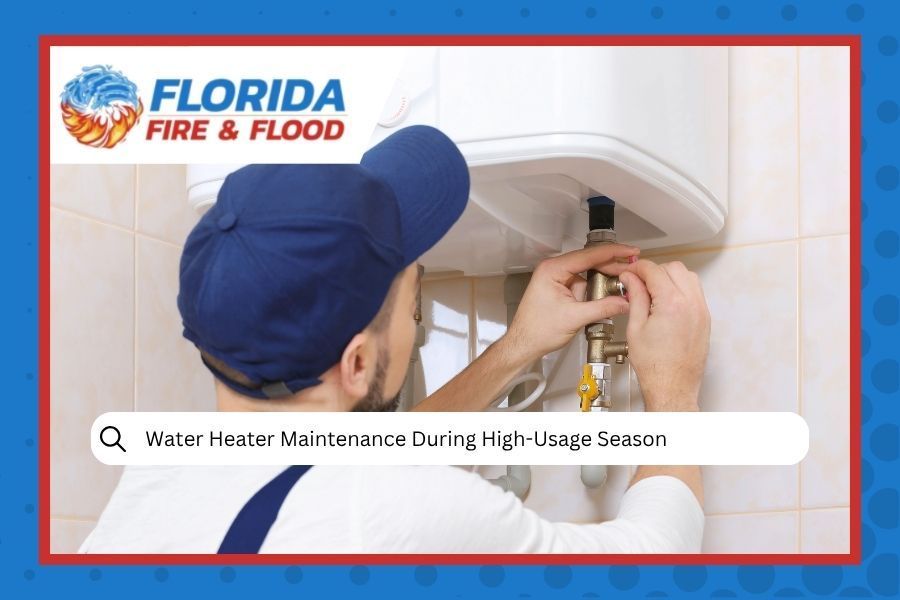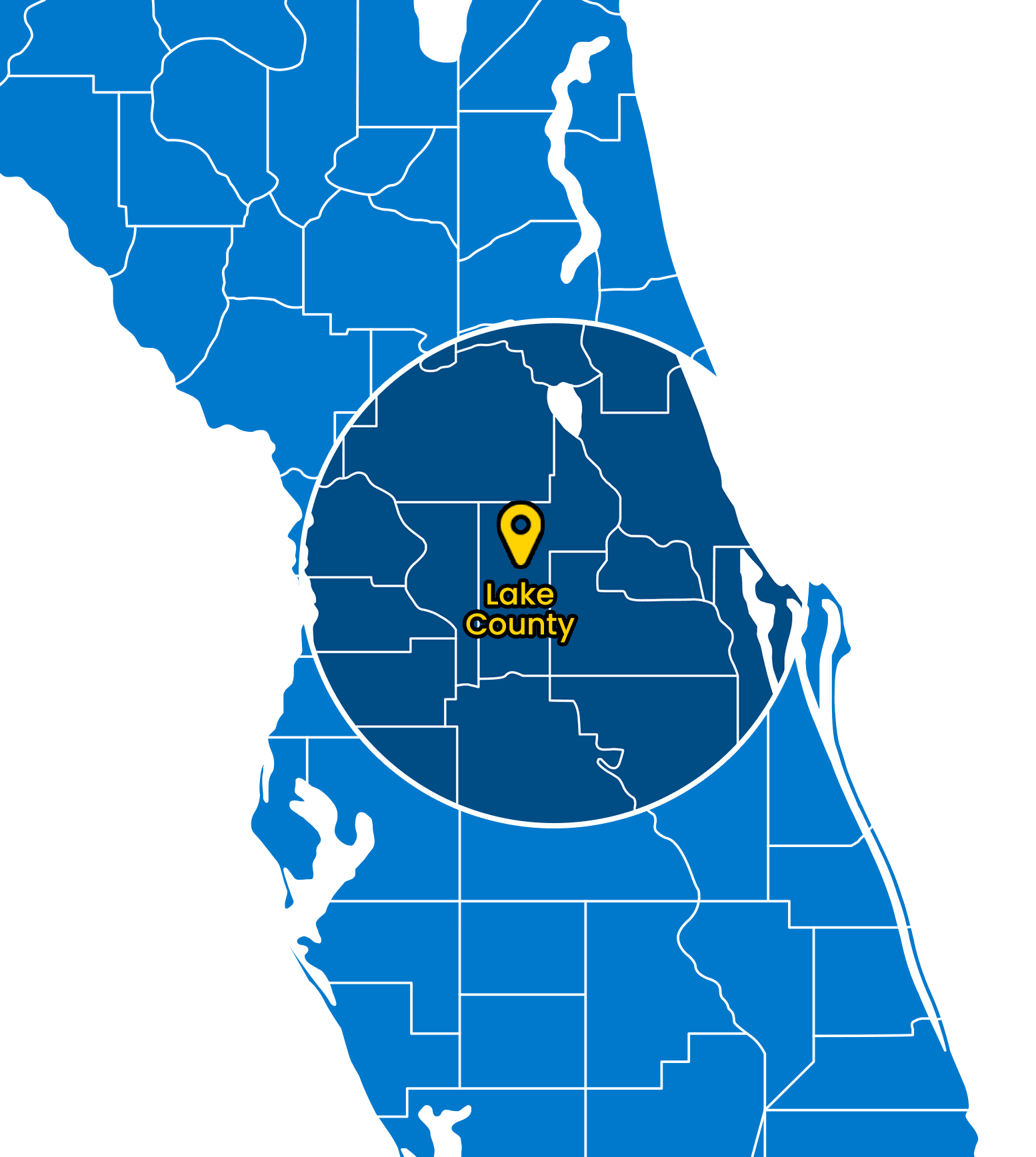AMRT - Applied Microbial Technician I, (Mold Remediation)
Jump To:
- Why Fall Humidity in Florida Is Different
- Common Places Mold Hides During Fall
- Practical Steps to Prevent Mold Growth This Fall
- What to Do If You Suspect Mold
- The Connection Between Water Damage and Fall Mold
- Why Central Florida Homes Need Extra Attention
- When to Call Florida Fire & Flood
- Frequently Asked Questions
You might think fall in Central Florida means cooler, drier weather, but the reality is a bit more complicated. While temperatures do drop slightly, humidity levels can be all over the map, and those fluctuations create some serious opportunities for mold to move in and make itself at home. At Florida Fire & Flood , we've seen how quickly mold can take hold when conditions are right, and fall's unpredictable weather patterns are like rolling out the welcome mat.
The good news? Understanding how fall humidity affects your home and taking a few proactive steps can save you from dealing with a full-blown mold problem later. Let's talk about what's really happening with Florida's fall weather, why it matters for your home, and what you can actually do about it.
Why Fall Humidity in Florida Is Different
When most of the country is breaking out the sweaters and watching leaves change color, we're still dealing with afternoon thunderstorms and sticky air. Fall in Central Florida doesn't follow the same script as it does up north. Sure, the mornings might feel a bit cooler, especially in November, but humidity levels can swing wildly from day to day.
Here's what makes fall tricky: we're transitioning away from the consistently high humidity of summer, but we're not quite into the drier winter months yet. You might have a few days where the air feels crisp and comfortable, followed by a week of muggy conditions that feel more like August than October. These ups and downs confuse your HVAC system, create condensation in unexpected places, and give mold the moisture it needs to thrive.
Mold Growth Timeline After Water Exposure
The Science Behind Indoor Moisture in Fall
When outdoor humidity drops at night but rises during the day, the temperature differences create condensation on cooler surfaces inside your home. Think about what happens when you take a cold drink outside on a warm day, that's basically what's happening on your windows, walls, and even inside your air ducts when conditions are right.
This condensation, even in small amounts, provides enough moisture for mold spores to germinate and start growing. Add in any existing water damage that wasn't properly addressed , and you've got a recipe for trouble.
Concerned about mold in your home? Our team at Florida Fire & Flood specializes in professional mold remediation throughout Central Florida. We're available 24/7 because mold doesn't wait for business hours.
Call us at (352) 644-7969 or schedule a free consultation today.
Common Places Mold Hides During Fall
Mold is sneaky. It doesn't always show up in obvious places, especially during fall when you might not be thinking about humidity issues the way you do in summer. Here are the spots we see problems most often during this time of year:
Around Air Conditioning Units
Your AC might not be running as much in fall, but that doesn't mean it's off the hook. When the system cycles on and off more frequently due to moderate temperatures, condensation can build up in the drain pan or ductwork. If that moisture doesn't evaporate quickly or drain properly, mold finds a cozy home.
Bathroom Exhaust Fans and Vents
People tend to use exhaust fans less in fall because it's not quite as hot and steamy after showers. But bathrooms still generate plenty of moisture, and without proper ventilation, that moisture settles on walls, ceilings, and inside the vent itself. We've pulled apart bathroom exhaust fans that looked like science experiments gone wrong.
Windows and Sliding Glass Doors
Morning condensation on windows is common in fall, especially on single-pane glass or older sliding doors. That moisture needs to be wiped away regularly, or it will seep into the frame, the walls around it, or pool on windowsills. Before you know it, you've got black mold creeping along the edges.
Attics and Crawl Spaces
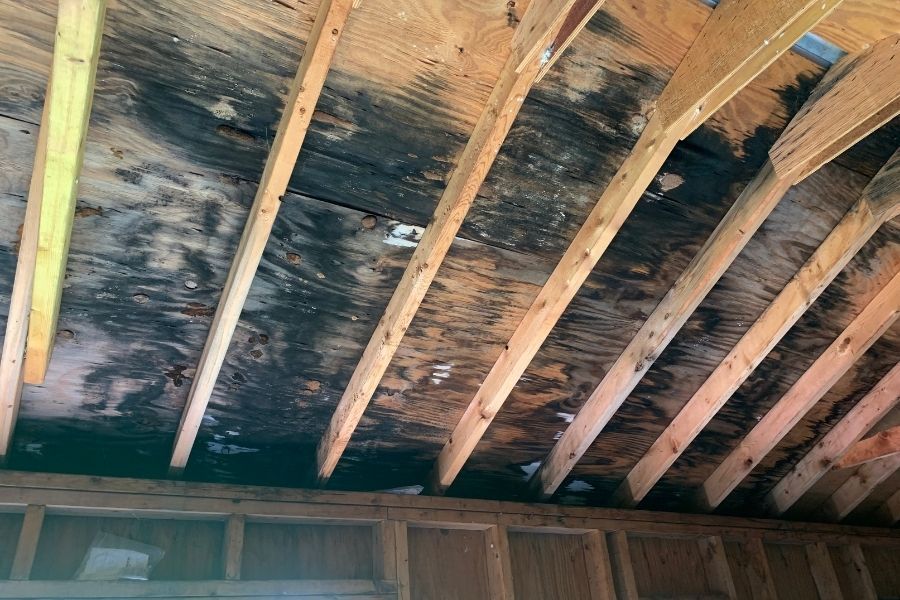
Attic mold can spread rapidly in fall when temperature fluctuations create the perfect environment for growth in poorly ventilated spaces.
These areas might seem far removed from your daily life, but they're actually perfect spots for fall mold growth. Temperature changes cause warm, humid air to rise and get trapped in poorly ventilated attics. Crawl spaces underneath homes can collect moisture from the ground, especially after heavy rain, which we still get plenty of in fall.
Practical Steps to Prevent Mold Growth This Fall
Preventing mold doesn't require a PhD in moisture management. It just takes some awareness and a handful of smart habits. Here's what actually works:
Your Fall Mold Prevention Checklist
- Monitor indoor humidity levels: Keep it between 30-50%. Pick up an inexpensive hygrometer to track this. If your home consistently runs above 60%, you need to take action.
- Run your AC periodically: Even if it's comfortable outside, run your air conditioning for a bit each day. This helps remove moisture from the air and keeps your system's drain lines clear.
- Use bathroom and kitchen exhaust fans: Every single time you shower or cook. Let them run for at least 15 minutes after you're done to clear out the moisture.
- Check for leaks regularly: Look under sinks, around toilets, behind appliances, and anywhere else water lines run. Small leaks turn into big problems fast.
- Clean your gutters: Fall storms can dump a lot of rain in a short time. Clogged gutters overflow and send water right into your walls and foundation.
- Inspect your roof: Look for missing shingles or damaged areas before the rainy season hits harder in late fall. Water intrusion through the roof is one of the fastest ways to get mold in your attic.
- Wipe down condensation immediately: If you see moisture on windows, mirrors, or any other surface, wipe it up. Don't let it sit.
- Consider a dehumidifier: For particularly humid areas like bathrooms, laundry rooms, or basements, a dehumidifier can make a huge difference.
| Humidity Level | What It Means | Action Needed |
|---|---|---|
| Below 30% | Too dry, uncomfortable | May need humidification |
| 30-50% | Ideal range | Maintain current conditions |
| 50-60% | Elevated risk | Increase ventilation, run AC more |
| Above 60% | High mold risk | Use dehumidifier, check for leaks |
HVAC Maintenance Matters More Than You Think
Your heating and cooling system is your first line of defense against indoor moisture. Fall is the perfect time to have your HVAC system serviced. A professional can clean your coils, check your drain lines, replace your filters, and make sure everything is working efficiently.
We can't tell you how many mold problems we've traced back to a clogged AC drain line or dirty coils that weren't removing humidity properly. It's a simple fix that prevents major headaches down the road.
Need help protecting your home from mold? Get Your Free Mold Assessment
What to Do If You Suspect Mold
Maybe you're reading this and thinking, "Uh oh, I think I might already have a problem." First off, don't panic. Mold is incredibly common in Florida homes, and it's treatable when caught early. Here's what you should do:
Look for the Warning Signs
Visible mold is obvious, but other signs can tip you off before you see anything. Musty odors, especially in closed-off rooms or closets, are a dead giveaway. Increased allergy symptoms, respiratory issues, or unexplained headaches can also indicate mold is present, even if you can't see it. According to the EPA's guide on mold and health , exposure can cause a variety of health effects depending on your sensitivity.
If you notice any water stains on ceilings, walls, or floors, that's another red flag. Water stains mean moisture got in at some point, and where there's been moisture, there might be mold. You'd be surprised at how much damage seemingly minor issues can cause, like the health risks discussed in this article about health problems after water damage.
Don't Go the DIY Route for Large Areas

Professional mold remediation involves proper containment, industrial equipment, and thorough treatment to ensure mold doesn't return.
If you're dealing with mold covering more than a few square feet, or if it's in your HVAC system, calling in professionals is the smart move. Disturbing large mold colonies releases massive amounts of spores into the air, which can spread the problem and potentially make you sick.
Professional mold remediation involves proper containment, air filtration, safe removal of contaminated materials, and thorough cleaning of affected areas. It's not just about scrubbing away what you can see; it's about making sure the mold doesn't come back.
The Connection Between Water Damage and Fall Mold
Water damage and mold go hand in hand, especially in fall when conditions are ripe for growth. If your home experienced any water damage during the summer storm season and it wasn't completely dried and treated, fall's humidity fluctuations will almost certainly lead to mold problems.
This is why proper water damage restoration is so critical. It's not enough to just extract the standing water and set up some fans. Professional restoration involves measuring moisture levels in materials, using industrial-grade dehumidifiers, treating surfaces with antimicrobial solutions, and monitoring the space until everything is completely dry.
We've seen too many situations where homeowners thought they handled water damage on their own, only to discover extensive mold growth weeks or months later. By that point, what could have been a straightforward cleanup has turned into a major remediation project.
Why Central Florida Homes Need Extra Attention
Living in Lake County, Sumter County, Marion County, or anywhere else in Central Florida comes with unique challenges when it comes to moisture and mold. Our climate is unlike most of the country. We don't get the benefit of truly dry seasons that naturally reset moisture levels in buildings.
Homes in The Villages, Mount Dora, Tavares, Eustis, Leesburg, and surrounding areas deal with high water tables, afternoon thunderstorms, and near-constant humidity for most of the year. Building materials here never fully dry out the way they do in drier climates, which means mold prevention requires ongoing vigilance rather than just seasonal attention.
This is especially true for older homes that might not have been built with the moisture barriers and ventilation systems that newer construction includes. If you own a home built before the 1990s, paying extra attention to humidity control is even more important.
Looking for more ways to protect your home? Check out our guide on understanding your homeowner's insurance coverage for water damage in Florida.
When to Call Florida Fire & Flood
You don't have to wait until you have a full-blown mold problem to reach out to us. In fact, we'd much rather help you prevent issues than clean them up after the fact. Our team can assess your home's vulnerability to mold, check moisture levels, and recommend specific steps based on your home's unique situation.
If you're dealing with any of these situations, give us a call:
- You've noticed musty odors that won't go away
- You see visible mold growth anywhere in your home
- You've had recent water damage, even if it seemed minor
- You're experiencing unexplained health symptoms that improve when you're away from home
- You're about to buy or sell a home and want a professional assessment
- Your indoor humidity is consistently above 60% despite your efforts
We're locally owned and operated right here in Central Florida, which means we understand the specific challenges our climate creates. We've been helping homeowners throughout Lake County and surrounding areas deal with mold and moisture issues for years, and we've seen just about every scenario you can imagine.
Our approach is practical and honest. We'll tell you exactly what needs to be done, what doesn't, and how to prevent problems from recurring. We're not here to sell you services you don't need. We're here to protect your home and your health.
Ready to protect your Central Florida home from fall mold growth? Florida Fire & Flood is here to help. We serve homeowners throughout Tavares, Orlando, Mount Dora, The Villages, Eustis, and all of Central Florida with comprehensive mold remediation and water damage restoration services.
Contact us today for a free consultation or call (352) 644-7969 for immediate assistance. We're available 24/7 because your home's safety can't wait.

